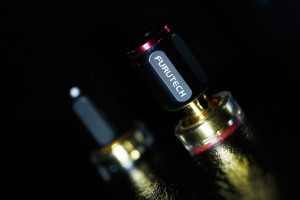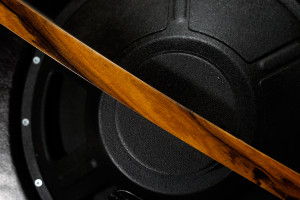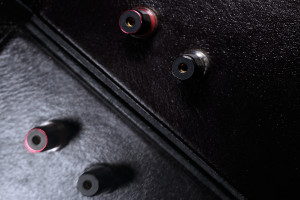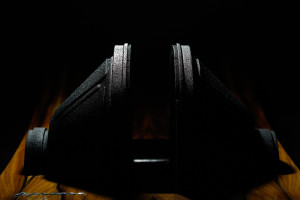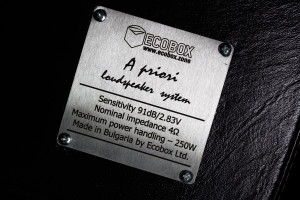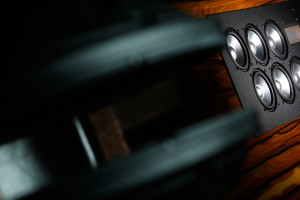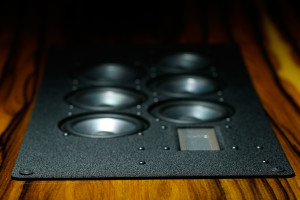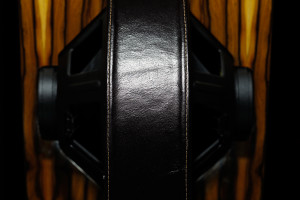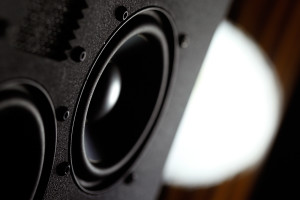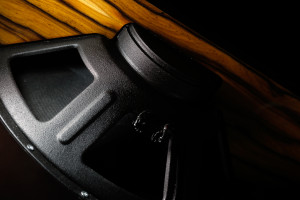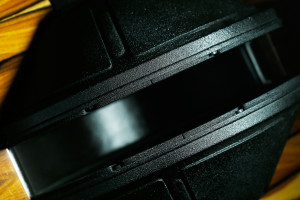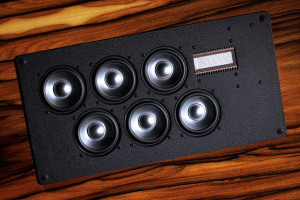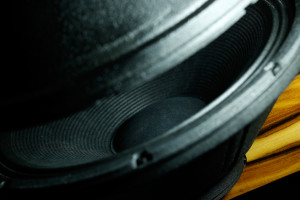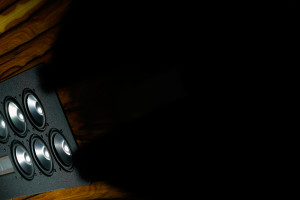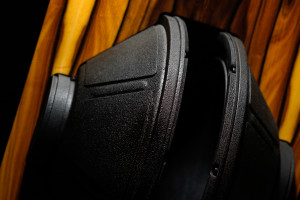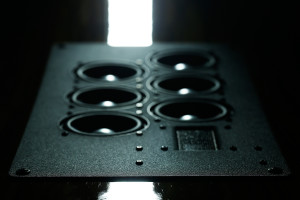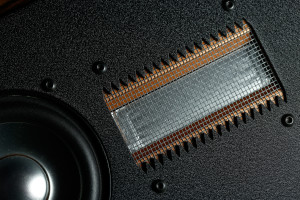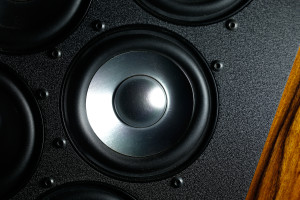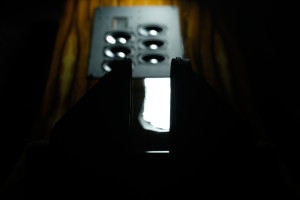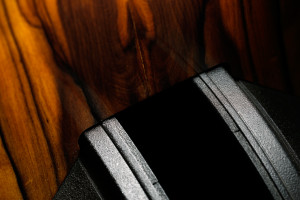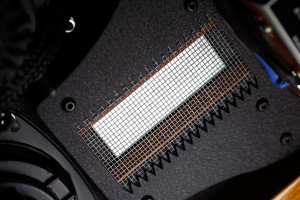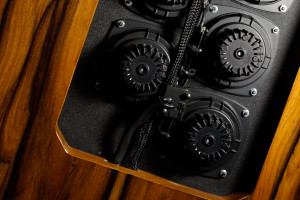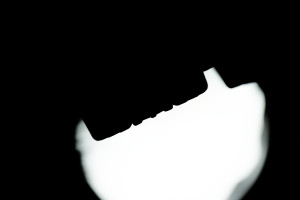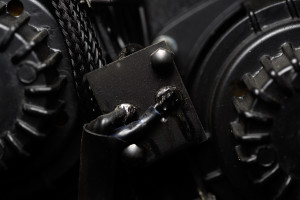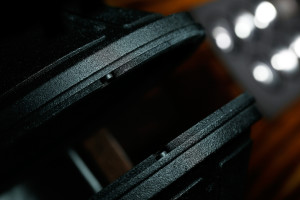Yours truly can’t say ‘no’ to products of even slight OB topology resemblance. Its inherent virtues simply do the job for him. In such rare cases, curiosity kicks in before anything happens and serves as hi-octane fuel on yet another journalistic trip. A twist or two along the road make this already intense sensation amplified even more and that’s the story with this writing’s hero – Ecobox A priori. Enjoy!
Introduction
Even though there’s no such thing as certainty in audio, some distinct features usually repeat from one design to another of similar sort. And listeners resonate with these. It’s a purely subjective matter how exactly we’re triggered by i.e. valves, class D amplification, bass-reflex affairs, transducer types/sizes or horns. Point being, as human beings we simply are and journalists are no different in this regard. An assignment capable of ringing one’s individual bells in the right way will make it this much more interesting to begin with. I strongly believe that this is one out of several driving forces that push us to do this wacky audio thing. And this review’s hero is the very reason why not its manufacturer but yours truly pulled a finger on the trigger first. It’s a very unusual product we’re dealing with in this review. Curiosity, right? It kicked in hard this time around. They say it killed the cat. Fair enough, but who knows? Maybe satisfaction will bring the critter back?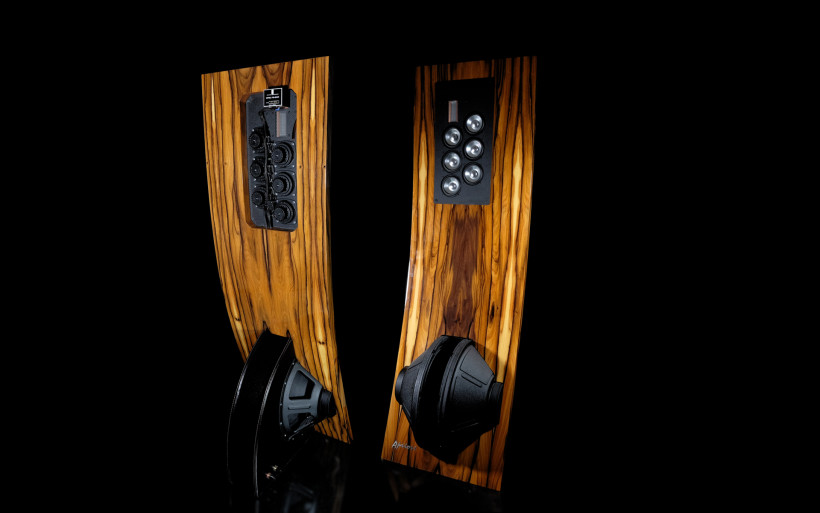 Srajan’s Ecobox Daydream writing appeared somewhere in July 2017. These speakers looked like nothing I’ve seen thus far. Quite obvious OB resemblance was there, that’s true. But several rather important aspects were different, peculiar to say the least, definitely not mainstream. OB speakers are rare on their own. Still, superb Raal ribbon dipole tweeter accompanied by an array of six small drivers and a Ripol bass plot with a boxless twist is a rather clear indication that someone wants to stand out of the crowd, that’s a given. But the real question is this: are all these measures mere trickery and nothing else? Or much grander, properly engineered and fully functional scheme? There was only one obvious way to find out. The reply was not only very fast, which is quite unusual, but also direct. “Yes” was the Ecobox main man’s answer, hence the game was on.
Srajan’s Ecobox Daydream writing appeared somewhere in July 2017. These speakers looked like nothing I’ve seen thus far. Quite obvious OB resemblance was there, that’s true. But several rather important aspects were different, peculiar to say the least, definitely not mainstream. OB speakers are rare on their own. Still, superb Raal ribbon dipole tweeter accompanied by an array of six small drivers and a Ripol bass plot with a boxless twist is a rather clear indication that someone wants to stand out of the crowd, that’s a given. But the real question is this: are all these measures mere trickery and nothing else? Or much grander, properly engineered and fully functional scheme? There was only one obvious way to find out. The reply was not only very fast, which is quite unusual, but also direct. “Yes” was the Ecobox main man’s answer, hence the game was on.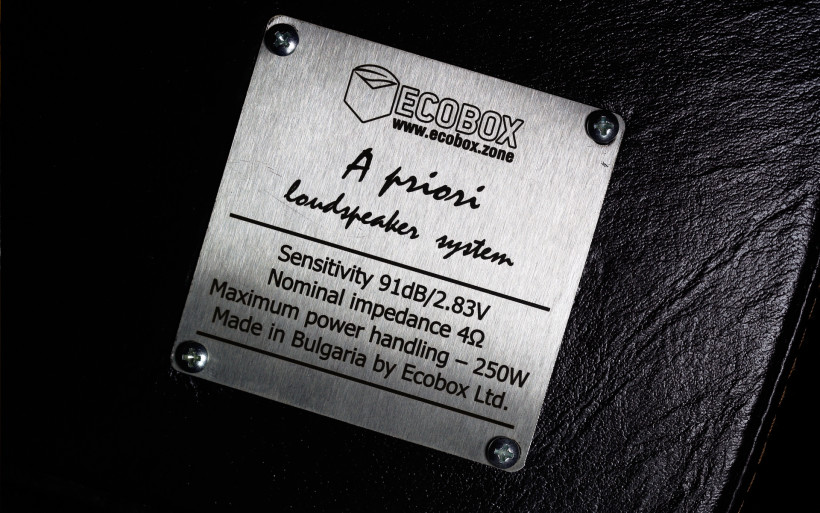 My contact was Svetoslav. He’s both the CEO and the founder of the Ecobox Ltd company. It’s based in Bulgaria’s capital city – Sofia. He’s an economist with a master’s degree in finance, but also a passionate dedicated to music. Along with several other specialists, he established this manufacture almost five years ago. The goal was to develop several audio products, as per usual. Mr Radev is an engineer with more than 25 years experience in electronic audio design, whereas the chief carpenter with two decades in this business – Mr Dimitrov – is one of the leaders of the carpenters union of Bulgaria. He obviously is also a car aficionado, that’s probably the best description of someone who’s built a wooden retro car. Transducers related tweakery is on Mr Nikolov’s shoulders whereas Mr Radisavljevic (famous Raal manufacture owner) not only provides his fine ribbon tweeters but also helps solving various audio related issues along the R&D road.
My contact was Svetoslav. He’s both the CEO and the founder of the Ecobox Ltd company. It’s based in Bulgaria’s capital city – Sofia. He’s an economist with a master’s degree in finance, but also a passionate dedicated to music. Along with several other specialists, he established this manufacture almost five years ago. The goal was to develop several audio products, as per usual. Mr Radev is an engineer with more than 25 years experience in electronic audio design, whereas the chief carpenter with two decades in this business – Mr Dimitrov – is one of the leaders of the carpenters union of Bulgaria. He obviously is also a car aficionado, that’s probably the best description of someone who’s built a wooden retro car. Transducers related tweakery is on Mr Nikolov’s shoulders whereas Mr Radisavljevic (famous Raal manufacture owner) not only provides his fine ribbon tweeters but also helps solving various audio related issues along the R&D road. Svetoslav wrote that all these people share the same passion for good music and sound of great quality. Shortly after his company’s launch, vintage equipment renovation was the core business. The Ecobox crew restored reel recorders, turntables and other classic equipment, whereas first products developed and in-house made were Schumann and bell resonators. Then one by one new goods appeared in the Bulgarian portfolio and now it’s quite crowded there; stereo and mono power amplifiers, one preamplifier, several turntable designs, bass traps, audio racks, cables, three models of loudspeakers and then some. Svetoslav’s operation is equipped with modern CNC machines, 3D printers and both measuring and computerized equipment. When necessary tools, skilled people and passion for the same thing meet, good things are bound to happen. Still, the preferred Ecobox approach is to create products – as Svetoslav puts it – with hands, personal dedication and passion. More than 80% of this company’s goods are tailor made to a customer’s order and wish, hence personalized to make her/him happy.
Svetoslav wrote that all these people share the same passion for good music and sound of great quality. Shortly after his company’s launch, vintage equipment renovation was the core business. The Ecobox crew restored reel recorders, turntables and other classic equipment, whereas first products developed and in-house made were Schumann and bell resonators. Then one by one new goods appeared in the Bulgarian portfolio and now it’s quite crowded there; stereo and mono power amplifiers, one preamplifier, several turntable designs, bass traps, audio racks, cables, three models of loudspeakers and then some. Svetoslav’s operation is equipped with modern CNC machines, 3D printers and both measuring and computerized equipment. When necessary tools, skilled people and passion for the same thing meet, good things are bound to happen. Still, the preferred Ecobox approach is to create products – as Svetoslav puts it – with hands, personal dedication and passion. More than 80% of this company’s goods are tailor made to a customer’s order and wish, hence personalized to make her/him happy.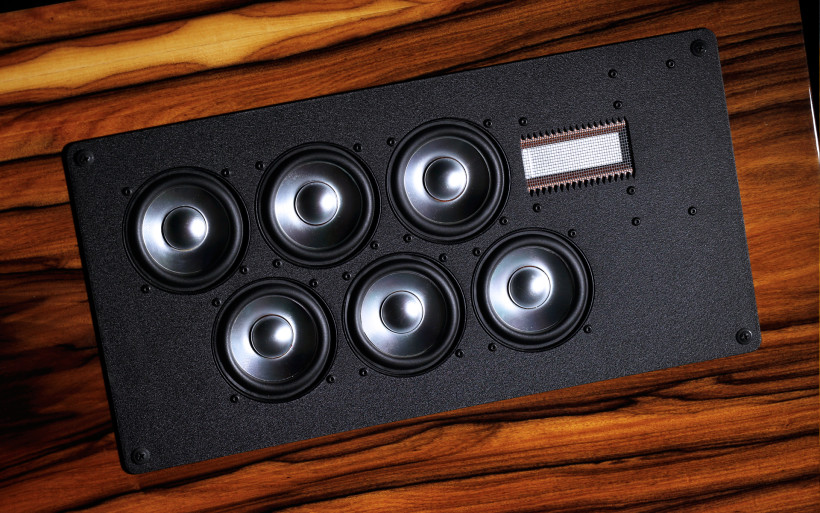 The ‘Eco’ part in the company run by Svetoslav isn’t random. This firm’s CEO informed me that nature and environment friendliness is very important to the whole team. And that this is seen in products they make. The focus? Natural materials; solid wood, ply, bio oils and paint are the reasons why in the Bulgarian case our Mother Nature can be happy and farmed wood is yet another one. Svetoslav strongly believes that natural materials not only look good, but also impact the sound in a positive way. This is seen in i.e. resonators, bass traps, amplifiers and speakers made by him and his crew.
The ‘Eco’ part in the company run by Svetoslav isn’t random. This firm’s CEO informed me that nature and environment friendliness is very important to the whole team. And that this is seen in products they make. The focus? Natural materials; solid wood, ply, bio oils and paint are the reasons why in the Bulgarian case our Mother Nature can be happy and farmed wood is yet another one. Svetoslav strongly believes that natural materials not only look good, but also impact the sound in a positive way. This is seen in i.e. resonators, bass traps, amplifiers and speakers made by him and his crew.
Build
Before we’ll go any deeper into the tasty bits, it’s important to know that communication with Ecobox was flawless. Prompt reply to every mail was given within hours, not days or weeks. This attitude surely makes the journalistic profession a bit easier. This might seem as unnecessary text filler, but in reality proper communication is crucial, without it there’s no progress. At times, past initial courtesies it becomes sluggish and diluted to a point where some assignments never happen. In any case, Svetoslav acted the opposite, he seemed to be always on duty. Point being, the initial impression of the Ecobox company and its CEO was and still is very good; professional, direct and kind.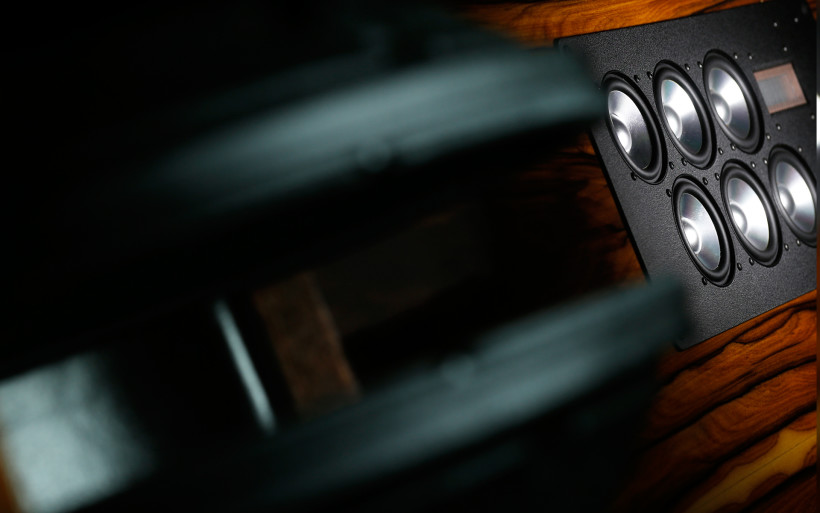 The package sent to yours truly was big and heavy, two ply crates delivered via DB Schenker weren’t a one-man task to handle, no sir. Additional pair of helping hands turned out to be undoubtedly very useful. The removal process of mandatory screws took some time, yet no head-scratching at all. Two out of several flat surfaces per box were marked as 1 and 2, which translated to disassembly order of these. The procedure itself was painless and quite smooth. Each speaker was clad in a cloth overlay and sat perfectly between foam fillers inside its plywood house. Once the product was out, it resembled Srajan’s loaner to quite an extent. Still, it looked far poshier, complete and subjectively better. Svetoslav explained that his A priori flagship has thicker body out of the two, hence is heavier and more rigid. In addition, its crossovers are hidden inside bass sections and big 15” cannons positioned 30 mm lower translate to deeper and more substantial downstairs department in general. I was also told that his Daydream model sounds gentler and more ethereal/airier in comparison. I can’t say, I haven’t heard it.
The package sent to yours truly was big and heavy, two ply crates delivered via DB Schenker weren’t a one-man task to handle, no sir. Additional pair of helping hands turned out to be undoubtedly very useful. The removal process of mandatory screws took some time, yet no head-scratching at all. Two out of several flat surfaces per box were marked as 1 and 2, which translated to disassembly order of these. The procedure itself was painless and quite smooth. Each speaker was clad in a cloth overlay and sat perfectly between foam fillers inside its plywood house. Once the product was out, it resembled Srajan’s loaner to quite an extent. Still, it looked far poshier, complete and subjectively better. Svetoslav explained that his A priori flagship has thicker body out of the two, hence is heavier and more rigid. In addition, its crossovers are hidden inside bass sections and big 15” cannons positioned 30 mm lower translate to deeper and more substantial downstairs department in general. I was also told that his Daydream model sounds gentler and more ethereal/airier in comparison. I can’t say, I haven’t heard it.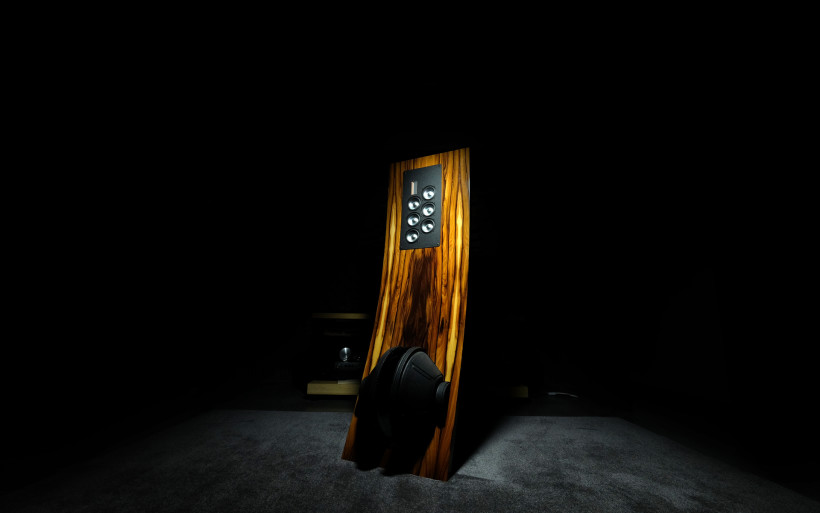 A priori model was in development for three years. Although not as big as i.e. Fikus Electric P-17, it’s quite a giant still. It measures (HxWxD) 135x43x51 cm, hence is very tall, yet visually slim and nowhere near as bulky/massive optically as the former by Fikus Electric operation. A priori weighs a lot, though to move one 39 kilograms heavy speaker around a room is doable. Both this model and Daydream are patent pending open baffle designs. As far as numbers go, this review’s hero is a three-way product with base and mid cut-off frequencies set at 400Hz and 4000Hz respectively. Frequency range is 34Hz – 34kHz (0,- 3dB) and 21Hz – 54kHz (0,-10dB). The sensitivity is 91dB@2.83V, nominal impedance is 4Ω and maximum power handling of 250W seals the deal. Impedance correction is a part of the Bulgarian package and its descriptive figures tell us that it should sing with low power amplifiers.
A priori model was in development for three years. Although not as big as i.e. Fikus Electric P-17, it’s quite a giant still. It measures (HxWxD) 135x43x51 cm, hence is very tall, yet visually slim and nowhere near as bulky/massive optically as the former by Fikus Electric operation. A priori weighs a lot, though to move one 39 kilograms heavy speaker around a room is doable. Both this model and Daydream are patent pending open baffle designs. As far as numbers go, this review’s hero is a three-way product with base and mid cut-off frequencies set at 400Hz and 4000Hz respectively. Frequency range is 34Hz – 34kHz (0,- 3dB) and 21Hz – 54kHz (0,-10dB). The sensitivity is 91dB@2.83V, nominal impedance is 4Ω and maximum power handling of 250W seals the deal. Impedance correction is a part of the Bulgarian package and its descriptive figures tell us that it should sing with low power amplifiers.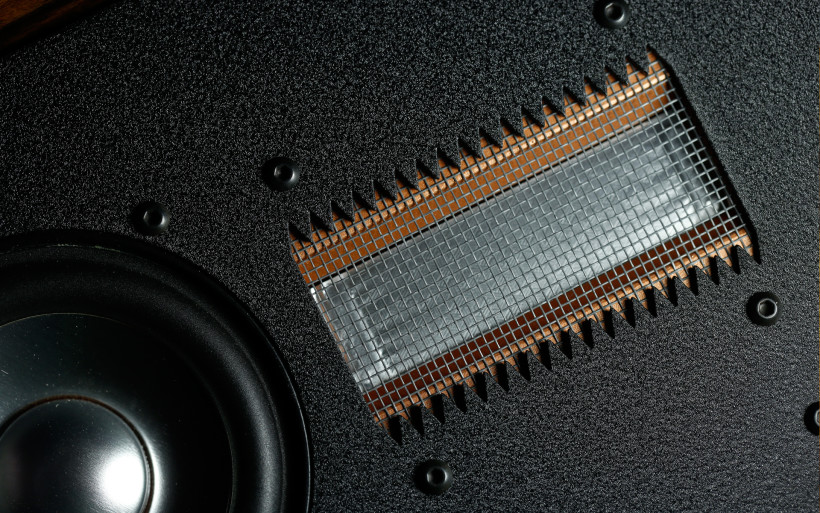 Ecobox A priori is an open baffle design, which means that there’s no chamber at all, hence no venting, but a single and rather thick wooden plate per speaker instead. The visual outcome is different in comparison to the one seen in Daydream model by the same manufacturer; not springy, heavily rounded and fairly thin but stiff, massive and very slightly curved. It feels more substantial, but again it’s about different approach and not the subjectively better vs. worse scenario. The Daydream shown in Srajan’s writing looks quite vanilla, whereas A priori delivered to my doorstep flaunts its gloss and very nicely matched exotic veneers. The former is loaded with the same drivers mounted in the same places as Daydream. Dipole ribbon 70-20XR tweeter by Raal was developed for these two models exclusively. It shares a rather big metal plate with small transducers responsible for midrange. I was informed that these small buggers were also custom-made for Ecobox and Raal was involved in this project as well.
Ecobox A priori is an open baffle design, which means that there’s no chamber at all, hence no venting, but a single and rather thick wooden plate per speaker instead. The visual outcome is different in comparison to the one seen in Daydream model by the same manufacturer; not springy, heavily rounded and fairly thin but stiff, massive and very slightly curved. It feels more substantial, but again it’s about different approach and not the subjectively better vs. worse scenario. The Daydream shown in Srajan’s writing looks quite vanilla, whereas A priori delivered to my doorstep flaunts its gloss and very nicely matched exotic veneers. The former is loaded with the same drivers mounted in the same places as Daydream. Dipole ribbon 70-20XR tweeter by Raal was developed for these two models exclusively. It shares a rather big metal plate with small transducers responsible for midrange. I was informed that these small buggers were also custom-made for Ecobox and Raal was involved in this project as well.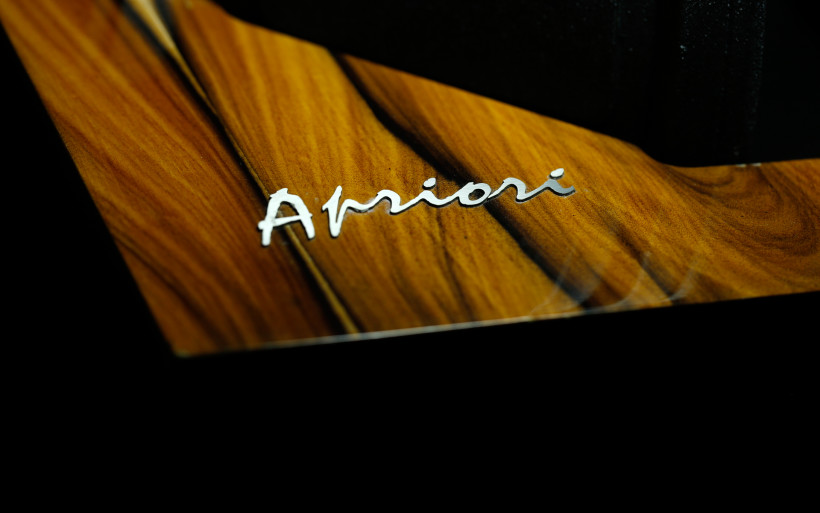 My eyes have seen some really quirky bass designs over the years. Still, what’s found in A priori is like nothing else. For example, lower piece of Voxativ’s 9.87 system is conceptually similar, membranes of its two isobarically aligned drivers look at each other in a rather specific enclosure and this is known as Ripol®. This sub produced one of subjectively the most enjoyable bass performances I’ve heard, topped only by Reflector Audio Bespoke P15 speakers. Yet what Ecobox does is even more radical than the Voxativ case as there’s no enclosure in its A priori model at all. Two American 15” bass drivers per speaker are unusually mounted, namely 90° rotated, modified in-house by Svetoslav’s crew and very nude. This not only makes this Bulgarian champ’s looks very intriguing but also unique. Daydream aside, there’s no other similar and commercially available floorstander on the planet. In Ripol® configuration, both woofers work in the same phase, simultaneously against each other and in an enclosure. In A priori though, their baskets seen from the front are sealed via robust metal plates, yet the rear half of these elements is open, hence a listener hears both front and back wave served coherently. This ‘Non volume Ripol System’ is patented by the Ecobox team. And to finish this paragraph, their A priori model is the only commercially available example of Dipol (MF + HF) and Ripol (LF) marriage.
My eyes have seen some really quirky bass designs over the years. Still, what’s found in A priori is like nothing else. For example, lower piece of Voxativ’s 9.87 system is conceptually similar, membranes of its two isobarically aligned drivers look at each other in a rather specific enclosure and this is known as Ripol®. This sub produced one of subjectively the most enjoyable bass performances I’ve heard, topped only by Reflector Audio Bespoke P15 speakers. Yet what Ecobox does is even more radical than the Voxativ case as there’s no enclosure in its A priori model at all. Two American 15” bass drivers per speaker are unusually mounted, namely 90° rotated, modified in-house by Svetoslav’s crew and very nude. This not only makes this Bulgarian champ’s looks very intriguing but also unique. Daydream aside, there’s no other similar and commercially available floorstander on the planet. In Ripol® configuration, both woofers work in the same phase, simultaneously against each other and in an enclosure. In A priori though, their baskets seen from the front are sealed via robust metal plates, yet the rear half of these elements is open, hence a listener hears both front and back wave served coherently. This ‘Non volume Ripol System’ is patented by the Ecobox team. And to finish this paragraph, their A priori model is the only commercially available example of Dipol (MF + HF) and Ripol (LF) marriage.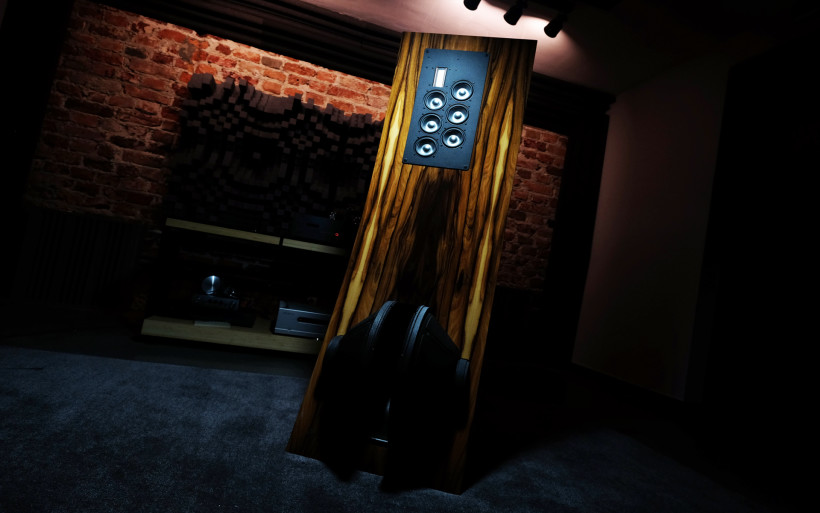 Łukasz Fikus with his P-17 speakers aimed for a very specific goal. He wanted to marry all OB virtues with efficiency and load easy enough to be handled easily by small valve amplifiers. In his P-17 case, a semi-open box twist was unavoidable. Svetoslav’s destination wasn’t that different. It took him and his crew three years to get there. All Ecobox flagship’s tech figures important in this context are lower, that’s true, but something to work with when one is equipped with low power amp still. But there’s no box of any kind. Needless to say, this review’s hero visually doesn’t resemble Herr LampizatOr’s P-17 at all. It’s much more domestic, that goes without saying. Visual difference between the two is staggering and their price tags show this as well. Three times the P-17 asking, that’s how much i.e. sleeker, poshier and subtler Bulgarian design will set you back.
Łukasz Fikus with his P-17 speakers aimed for a very specific goal. He wanted to marry all OB virtues with efficiency and load easy enough to be handled easily by small valve amplifiers. In his P-17 case, a semi-open box twist was unavoidable. Svetoslav’s destination wasn’t that different. It took him and his crew three years to get there. All Ecobox flagship’s tech figures important in this context are lower, that’s true, but something to work with when one is equipped with low power amp still. But there’s no box of any kind. Needless to say, this review’s hero visually doesn’t resemble Herr LampizatOr’s P-17 at all. It’s much more domestic, that goes without saying. Visual difference between the two is staggering and their price tags show this as well. Three times the P-17 asking, that’s how much i.e. sleeker, poshier and subtler Bulgarian design will set you back.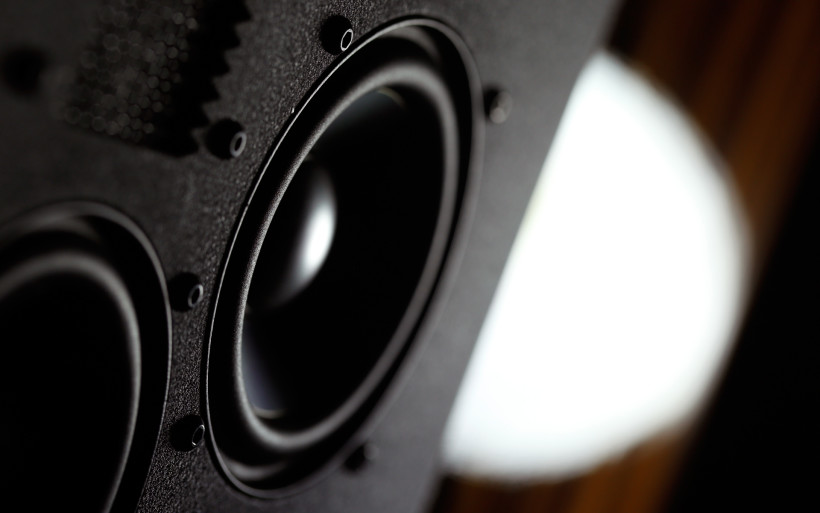 As far as rear goes, A priori doesn’t resemble Daydream at all. Bulky barrel found on the latter’s back is no more, the former has its x-overs hidden inside nicely looking, smaller and subtler leg made out of ply and covered in Italian leather. Finely engraved aluminium nameplate and a pair of Furutech terminals on the side make the picture complete. Daydream had some obvious finish flaws, things that could’ve been easily fixed. The Ecobox team are fast learners it seems, their latest floorstander is free from these imperfections. LF drivers are placed in their baffle with small yet even crack in-between, aren’t connected via ugly screws and the same story is with metal plate loaded with transducers up above. All six dipol midrange drivers per speaker have their cables very nicely managed and the 70-20XR tweeter is no different. As far as assembly and used materials’ quality go, Ecobox A priori meets high expectations. It’s a complete product, far from its infancy days. This journo had no valid reason to be picky. The progress over Daydream is obvious, case closed.
As far as rear goes, A priori doesn’t resemble Daydream at all. Bulky barrel found on the latter’s back is no more, the former has its x-overs hidden inside nicely looking, smaller and subtler leg made out of ply and covered in Italian leather. Finely engraved aluminium nameplate and a pair of Furutech terminals on the side make the picture complete. Daydream had some obvious finish flaws, things that could’ve been easily fixed. The Ecobox team are fast learners it seems, their latest floorstander is free from these imperfections. LF drivers are placed in their baffle with small yet even crack in-between, aren’t connected via ugly screws and the same story is with metal plate loaded with transducers up above. All six dipol midrange drivers per speaker have their cables very nicely managed and the 70-20XR tweeter is no different. As far as assembly and used materials’ quality go, Ecobox A priori meets high expectations. It’s a complete product, far from its infancy days. This journo had no valid reason to be picky. The progress over Daydream is obvious, case closed.
Sound
As per usual, the obvious source pick was LampizatOr Golden Gate (Psvane WE101D-L + KR Audio 5U4G Ltd. + TAIV VC-03 attenuation). Asus UX305LA served as a transport. My main amplifier was Trilogy 925 integrated amp. But since A priori is said to work with low power decks as well, FirstWatt F7 was used as well. The latter was at some point fronted by Sanders Sound Systems preamplifier. Here’s the story. Past the unboxing phase, it was time to decide where to place the speakers. Several things I’ve tried, yet something was still off. Shortly after Svetoslav explained that minimum distance from the back wall should be no less than one meter, whereas the distance between a listener and both speakers should be at least 2,5 times more. Otherwise transducers’ phases will be different and the LF part will be heard as a separate body. Needless to say, I acted accordingly and everything checked out. There was no need to reinvent the wheel. I was also informed that in smaller spaces like mine, RAAL ribbon tweeters should be placed inside and not out. In the end, my audio cave turned out to be average, at least that was my guess. Once both placement conditions were met, I was barely able to avoid bass sucked in just centimeters behind the listening spot. It was also quite obvious that A priori likes big rooms and mine with quite low ceiling seems to meet minimal requirements at best. It is what it is, let’s move on.
Past the unboxing phase, it was time to decide where to place the speakers. Several things I’ve tried, yet something was still off. Shortly after Svetoslav explained that minimum distance from the back wall should be no less than one meter, whereas the distance between a listener and both speakers should be at least 2,5 times more. Otherwise transducers’ phases will be different and the LF part will be heard as a separate body. Needless to say, I acted accordingly and everything checked out. There was no need to reinvent the wheel. I was also informed that in smaller spaces like mine, RAAL ribbon tweeters should be placed inside and not out. In the end, my audio cave turned out to be average, at least that was my guess. Once both placement conditions were met, I was barely able to avoid bass sucked in just centimeters behind the listening spot. It was also quite obvious that A priori likes big rooms and mine with quite low ceiling seems to meet minimal requirements at best. It is what it is, let’s move on.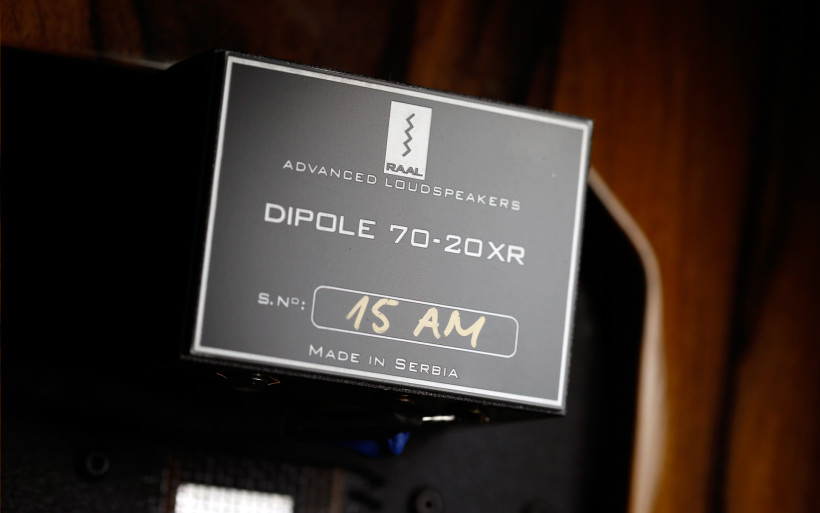 After taking a good long look at transducers in A priori, the subconscious guessing game was on. RAAL ribbon dipole tweeters indicated that the upstairs FR department will be top notch. The same story was with Fikus Electric P-17, although this product was loaded with a different Serbian driver. Moving somewhat lower, the initial assumption was that mid transducers with their presumably aluminium membranes sported quite informative and not very saturated attitude, whereas the bass module was a big mystery. 15” drivers looked like they escaped from the pro market, their paper membranes and ribbed surround gave this nfo away with ease. If these I’d encounter mounted in the usual fashion, namely with membranes directed at a listener, I’d say that the outcome would’ve been direct, of great scale and more agile and fit, not heavy and slow. In any case, generous cone surface should move enough air to make this scribe happy. Still, the naked Ripol plot was a big mystery, anything could happen.
After taking a good long look at transducers in A priori, the subconscious guessing game was on. RAAL ribbon dipole tweeters indicated that the upstairs FR department will be top notch. The same story was with Fikus Electric P-17, although this product was loaded with a different Serbian driver. Moving somewhat lower, the initial assumption was that mid transducers with their presumably aluminium membranes sported quite informative and not very saturated attitude, whereas the bass module was a big mystery. 15” drivers looked like they escaped from the pro market, their paper membranes and ribbed surround gave this nfo away with ease. If these I’d encounter mounted in the usual fashion, namely with membranes directed at a listener, I’d say that the outcome would’ve been direct, of great scale and more agile and fit, not heavy and slow. In any case, generous cone surface should move enough air to make this scribe happy. Still, the naked Ripol plot was a big mystery, anything could happen.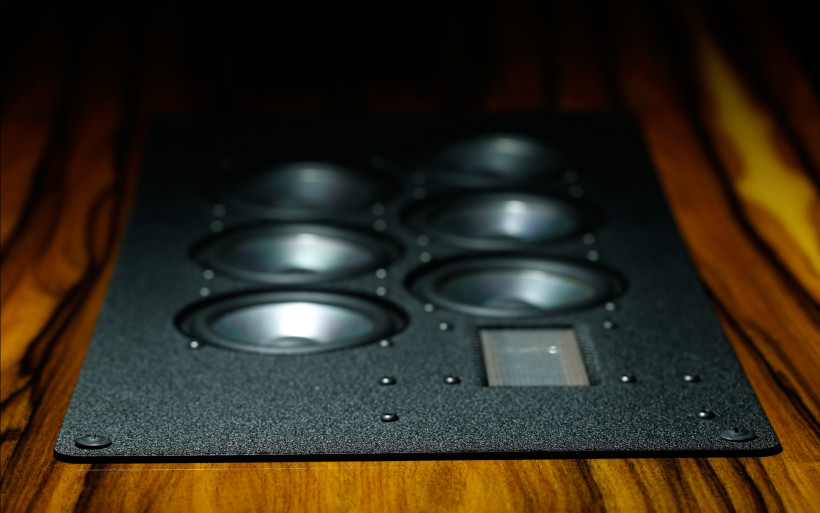 The guesswork up above isn’t too far off from the truth. Ecobox A priori sounds like a typical OB speaker and then some. This product plays in the truthful league, that’s the short version. The longer one is a bit complicated, there’s a number of things A priori won’t do. It won’t sugarcoat the outcome, not a chance. It won’t tell a fairy tale, namely mask unpleasantries in music. It won’t draw one into magical, dense and colorful world full of richness above all else. It won’t show the outcome as a pleasant, cuddly and polite one when an artist wanted it to be brutal, dirty and lightning fast. Still, our Bulgarian champ will do its thing with attitude and class.
The guesswork up above isn’t too far off from the truth. Ecobox A priori sounds like a typical OB speaker and then some. This product plays in the truthful league, that’s the short version. The longer one is a bit complicated, there’s a number of things A priori won’t do. It won’t sugarcoat the outcome, not a chance. It won’t tell a fairy tale, namely mask unpleasantries in music. It won’t draw one into magical, dense and colorful world full of richness above all else. It won’t show the outcome as a pleasant, cuddly and polite one when an artist wanted it to be brutal, dirty and lightning fast. Still, our Bulgarian champ will do its thing with attitude and class.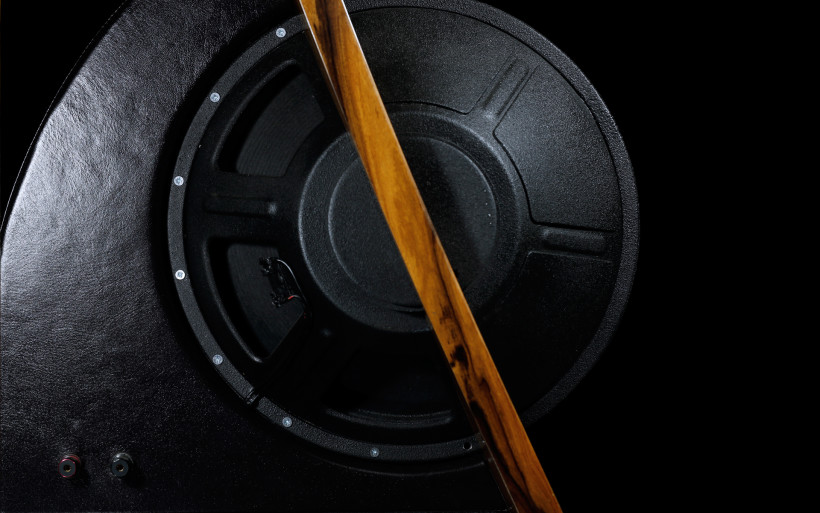 Let’s address the Ripol matter. Two married LF drivers per speaker pump very generous amount of air, hence the bass is present and in general the OB resemblance is surely there. As far as this FR part goes, the room interaction is minimal. Not even once the sound became bloated or fuzzy. That’s not all of it, though. This Ripol affair packs helluva punch, that’s the inherent OB legacy. But at the same time it doesn’t sound skinny, not at all. A priori is fast and the sensation of control over its LF is constantly present, that’s unquestionable. But texturing properly moist as well and generous density at the same time? No liposuction was performed in there. It’s safe to say that the Bulgarian product not only is feisty, but also tonally rich downstairs. And its bass isn’t overly stretched above, midrange clarity is preserved all the time. On “Sabrina” by Einsturzende Neubauten, boominess is oftentimes heard and A priori gets this job done perfectly. Additional difficult examples of the sort I could multiply, but the gist is that this product handles very complex bass lines like it’s nothing. Not even once it got lost, which I consider as quite an achievement. It’s actually a rare thing to hear bass like this; properly agile, dense, complex, perfectly articulate and rich at the same time. After all, how often can one hear a bass-reflex LF, yet stripped from boominess and midrange interaction, but also more direct and much faster? This happens very rarely. Job well done, bloody hell.
Let’s address the Ripol matter. Two married LF drivers per speaker pump very generous amount of air, hence the bass is present and in general the OB resemblance is surely there. As far as this FR part goes, the room interaction is minimal. Not even once the sound became bloated or fuzzy. That’s not all of it, though. This Ripol affair packs helluva punch, that’s the inherent OB legacy. But at the same time it doesn’t sound skinny, not at all. A priori is fast and the sensation of control over its LF is constantly present, that’s unquestionable. But texturing properly moist as well and generous density at the same time? No liposuction was performed in there. It’s safe to say that the Bulgarian product not only is feisty, but also tonally rich downstairs. And its bass isn’t overly stretched above, midrange clarity is preserved all the time. On “Sabrina” by Einsturzende Neubauten, boominess is oftentimes heard and A priori gets this job done perfectly. Additional difficult examples of the sort I could multiply, but the gist is that this product handles very complex bass lines like it’s nothing. Not even once it got lost, which I consider as quite an achievement. It’s actually a rare thing to hear bass like this; properly agile, dense, complex, perfectly articulate and rich at the same time. After all, how often can one hear a bass-reflex LF, yet stripped from boominess and midrange interaction, but also more direct and much faster? This happens very rarely. Job well done, bloody hell.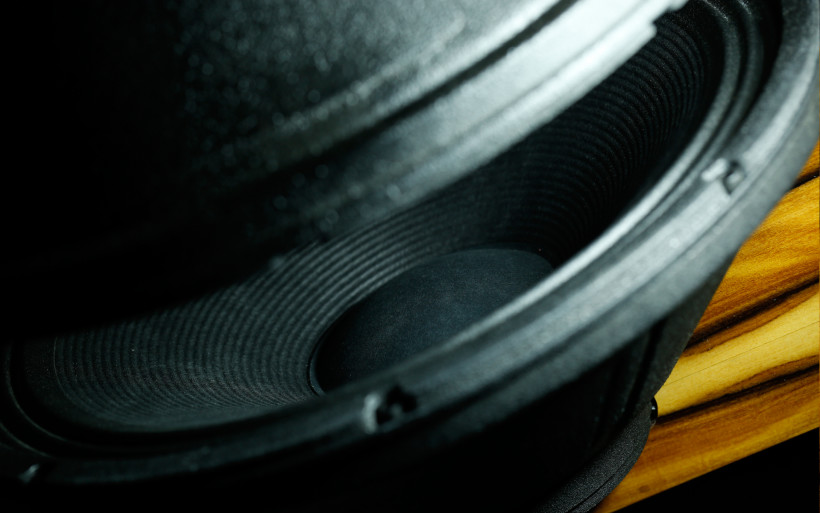 Midrange section is different, though. Six transducers sing in quite stiff and very informative manner usually. Not always, but we’ll get down to that. Why so much of them? To keep up with what’s down below. That’s the Ecobox way of having proper energy and presence in the mid realm. It might not look sexy to have six pairs in total of oddly placed, cold aluminium eyes looking at you, but it surely works. Point being, there’s neither hole in the midrange, nor excessive emphasis, which makes the A priori model very balanced. It’s worth to take into consideration that its mid section is about detail, presence, strong edges and the lot. It was done like so on purpose, though. Svetoslav’s intention was not to influence this scribe, hence the usual sound talk happened past several days of extensive listening and not any earlier. The message from the man was quite clear, A priori was tuned to be informative and honest and this exactly was heard.
Midrange section is different, though. Six transducers sing in quite stiff and very informative manner usually. Not always, but we’ll get down to that. Why so much of them? To keep up with what’s down below. That’s the Ecobox way of having proper energy and presence in the mid realm. It might not look sexy to have six pairs in total of oddly placed, cold aluminium eyes looking at you, but it surely works. Point being, there’s neither hole in the midrange, nor excessive emphasis, which makes the A priori model very balanced. It’s worth to take into consideration that its mid section is about detail, presence, strong edges and the lot. It was done like so on purpose, though. Svetoslav’s intention was not to influence this scribe, hence the usual sound talk happened past several days of extensive listening and not any earlier. The message from the man was quite clear, A priori was tuned to be informative and honest and this exactly was heard.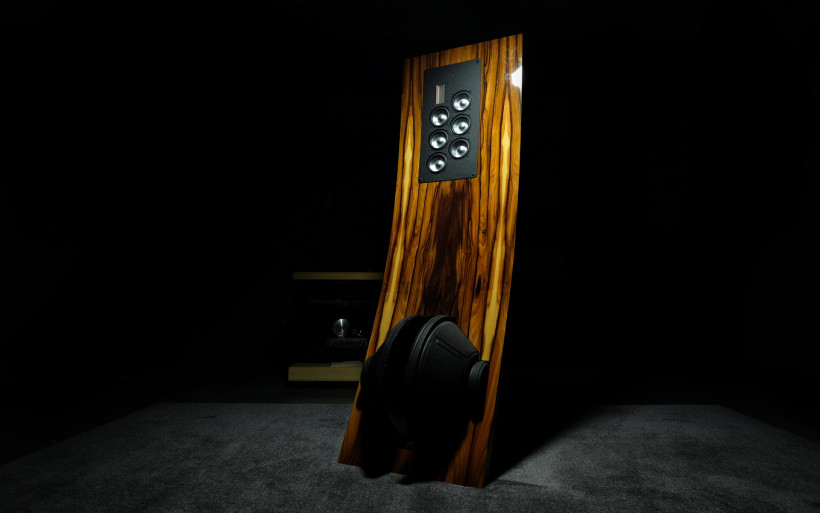 Some people might not like this approach, it’s far from the i.e. warm and emotional Xavian experience. PureAudioProject Trio10 Timeless sings prettier as well. Heck, even my reference Boenicke W8 is more romantic as far as midrange saturation and suavity go. Still, A priori is not a butcher. The key here is that it simply doesn’t like to lie. Rest assured that events in this particular FR will be honest, but also smooth and not edgy or dry. It can go either way to be honest, it all depends on a recording and setup used. AC/DC didn’t sound any nicer or more pleasant than usually, but fine stuff a’la DSD KODO is a completely different matter, of much greater quality undoubtedly. Point being, if A priori has decent material to work with, the outcome will be very good. Not brutally edgy but soft and natural.
Some people might not like this approach, it’s far from the i.e. warm and emotional Xavian experience. PureAudioProject Trio10 Timeless sings prettier as well. Heck, even my reference Boenicke W8 is more romantic as far as midrange saturation and suavity go. Still, A priori is not a butcher. The key here is that it simply doesn’t like to lie. Rest assured that events in this particular FR will be honest, but also smooth and not edgy or dry. It can go either way to be honest, it all depends on a recording and setup used. AC/DC didn’t sound any nicer or more pleasant than usually, but fine stuff a’la DSD KODO is a completely different matter, of much greater quality undoubtedly. Point being, if A priori has decent material to work with, the outcome will be very good. Not brutally edgy but soft and natural. Let’s finish the experience with marvelous upstairs. Needless to say, this was to be expected. Still, to hear highs this good, namely energetic, smooth, open, weighty, complex and with grand decay is a thing of beauty. Everything simply works in there and not a single aspect I’d tweak. The important thing to know is that this FR nicely blends with the rest, it doesn’t play on its own. And the more I enjoyed the RAAL ribbon tweeter at works, the more P-17 memories were brought back. It’s been a while since this product was at my place, yet – out of my head – in this regard it was comparable.
Let’s finish the experience with marvelous upstairs. Needless to say, this was to be expected. Still, to hear highs this good, namely energetic, smooth, open, weighty, complex and with grand decay is a thing of beauty. Everything simply works in there and not a single aspect I’d tweak. The important thing to know is that this FR nicely blends with the rest, it doesn’t play on its own. And the more I enjoyed the RAAL ribbon tweeter at works, the more P-17 memories were brought back. It’s been a while since this product was at my place, yet – out of my head – in this regard it was comparable.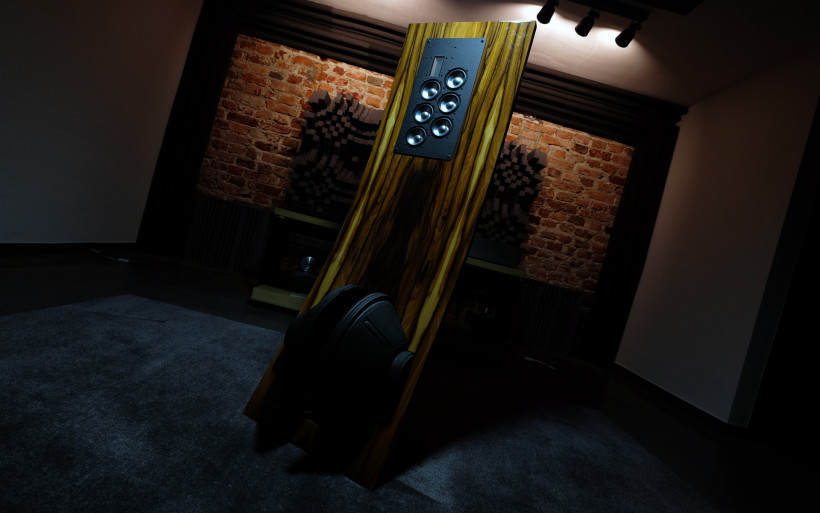 Ecobox A priori thus far is a nicely balanced speaker, with bass of unusual features and quality, strongly informative character in general and top tier highs. It’s also mandatory to mention that, since it moves large amounts of air, the sensation of musical presence is constantly with a listener. The same story is with directness and scale, A Priori belongs to the OB club after all. It sounds nothing like bass-reflex affair loaded with just several inches wide transducers, not at all. But that’s not the best part, the Bulgarian product creates utterly big image in front of a listener. That’s what makes the sound complete, it fits this model.
Ecobox A priori thus far is a nicely balanced speaker, with bass of unusual features and quality, strongly informative character in general and top tier highs. It’s also mandatory to mention that, since it moves large amounts of air, the sensation of musical presence is constantly with a listener. The same story is with directness and scale, A Priori belongs to the OB club after all. It sounds nothing like bass-reflex affair loaded with just several inches wide transducers, not at all. But that’s not the best part, the Bulgarian product creates utterly big image in front of a listener. That’s what makes the sound complete, it fits this model.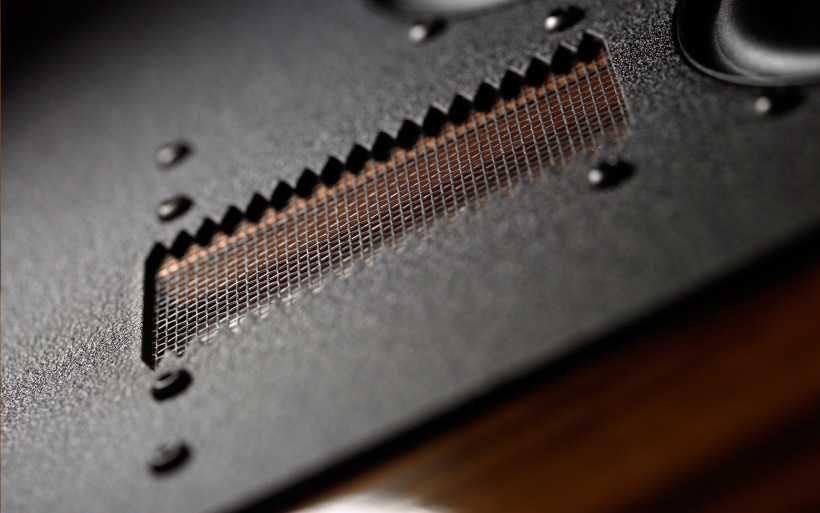 My listening chair of choice is IKEA POÄNG and when it’s in use, several A priori drivers easily operate above my head. Presumably that’s one of the reasons why soundstage is not only wide, but also unusually tall. The instruments and vocal lines ‘seen’ in there are also big. This effect would probably diminish a bit if I could increase distance to both speakers, yet this was impossible. The important part is that the show A priori creates isn’t abnormal, not at all. Everything checks out, but is served in a fashion bolder and more direct than usual. It’s generously airy as well, which positively impacts clarity. All this is very likeable. It takes a while to adjust oneself to big sound sources, it might seem strange at first. But when accommodation period is in the past, to get back to anything of lesser scale is quite difficult. That’s how the OB magic works. For instance, my Boenicke W8 floorstanders create far wider and deeper image, there’s no question about it. And they dissapear form the room far easier and remain completely invisible no matter what. But instruments these show are much smaller, hence seem humble and unreal in comparison. It’s fair to ask one question: what’s real in this context? I have no idea, but what I do know is that far wilder, feistier and ballsier A priori sounded like a live and very effortless thing, whereas the Swiss turned out to be a stuntman all in sweat while on the job. It was able to pull off bigger space, yet fell behind when it came to sketching things in there. Inches matter, end of story.
My listening chair of choice is IKEA POÄNG and when it’s in use, several A priori drivers easily operate above my head. Presumably that’s one of the reasons why soundstage is not only wide, but also unusually tall. The instruments and vocal lines ‘seen’ in there are also big. This effect would probably diminish a bit if I could increase distance to both speakers, yet this was impossible. The important part is that the show A priori creates isn’t abnormal, not at all. Everything checks out, but is served in a fashion bolder and more direct than usual. It’s generously airy as well, which positively impacts clarity. All this is very likeable. It takes a while to adjust oneself to big sound sources, it might seem strange at first. But when accommodation period is in the past, to get back to anything of lesser scale is quite difficult. That’s how the OB magic works. For instance, my Boenicke W8 floorstanders create far wider and deeper image, there’s no question about it. And they dissapear form the room far easier and remain completely invisible no matter what. But instruments these show are much smaller, hence seem humble and unreal in comparison. It’s fair to ask one question: what’s real in this context? I have no idea, but what I do know is that far wilder, feistier and ballsier A priori sounded like a live and very effortless thing, whereas the Swiss turned out to be a stuntman all in sweat while on the job. It was able to pull off bigger space, yet fell behind when it came to sketching things in there. Inches matter, end of story.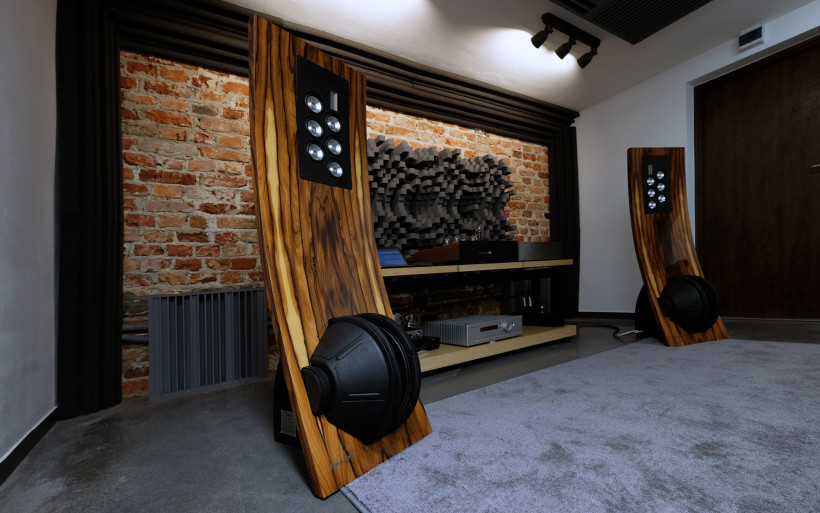 It was time to find out with what amplifier A priori will sing the best. Trilogy 925 as the very first pick was a no-brainer decision for two obvious reasons; it has enough power to handle Bulgarian floorstanders and sounds thick on its own, which turned out to be synergistic, hence beneficial right from the get-go. As suspected, the outcome was great; very authoritative, gutsy, expansive, of grand scale, with proper punch down below, natural midrange (with good recordings, that is) and beautiful shine up top. It was heard in an instant that my reference English deck liked these speakers. To get to 80 dB SPL, vol. was set at -40 dB in the 0 to 63 dB scale, hence plenty to work with still if needed. Then came FirstWatt F7 fronted by volume control module in this scribe’s reference DAC. Authority was heard once more, as that’s one of key F7 features, yet bass was easier and shallower and everything above became slightly thinner. The soundstage remained intact, though. The overall effect wasn’t as nice as with 925 integrated, yet respectable nonetheless. This was still quite the show and LampizatOr’s knob stopped at -9 dB (0 to -63 dB scale again). This deck’s TAIV VC-03 volume module takes the meat away, hence it wasn’t yet set in stone that Nelson’s F7 was the culprit. The only way to solve this mystery was to involve Sanders Sound Systems Preamplifier. To match previously measured SPL, 80/100 level was set. Aha, gotcha! Density was back on, especially in lower FR, yet this was hardly a victory. The reason? Two in fact and unnaturally emphasized and edgier midrange was the smaller one. The biggest problem was in the soundstage, it shrunk heavily. Both sides were victims of extensive trimming procedure, to a point where everything was locked between both speakers and pushed forward way too much. Generous bass gain was the only upshot and as such it couldn’t make it all work, far from it. Just a guesswork here, but different preamplifier could change a lot as F7’s potential wasn’t fully exploited. But the point of this exercise was to find out whether A priori will sound any good with ‘small’ 20WPC amp and it did with a bang.
It was time to find out with what amplifier A priori will sing the best. Trilogy 925 as the very first pick was a no-brainer decision for two obvious reasons; it has enough power to handle Bulgarian floorstanders and sounds thick on its own, which turned out to be synergistic, hence beneficial right from the get-go. As suspected, the outcome was great; very authoritative, gutsy, expansive, of grand scale, with proper punch down below, natural midrange (with good recordings, that is) and beautiful shine up top. It was heard in an instant that my reference English deck liked these speakers. To get to 80 dB SPL, vol. was set at -40 dB in the 0 to 63 dB scale, hence plenty to work with still if needed. Then came FirstWatt F7 fronted by volume control module in this scribe’s reference DAC. Authority was heard once more, as that’s one of key F7 features, yet bass was easier and shallower and everything above became slightly thinner. The soundstage remained intact, though. The overall effect wasn’t as nice as with 925 integrated, yet respectable nonetheless. This was still quite the show and LampizatOr’s knob stopped at -9 dB (0 to -63 dB scale again). This deck’s TAIV VC-03 volume module takes the meat away, hence it wasn’t yet set in stone that Nelson’s F7 was the culprit. The only way to solve this mystery was to involve Sanders Sound Systems Preamplifier. To match previously measured SPL, 80/100 level was set. Aha, gotcha! Density was back on, especially in lower FR, yet this was hardly a victory. The reason? Two in fact and unnaturally emphasized and edgier midrange was the smaller one. The biggest problem was in the soundstage, it shrunk heavily. Both sides were victims of extensive trimming procedure, to a point where everything was locked between both speakers and pushed forward way too much. Generous bass gain was the only upshot and as such it couldn’t make it all work, far from it. Just a guesswork here, but different preamplifier could change a lot as F7’s potential wasn’t fully exploited. But the point of this exercise was to find out whether A priori will sound any good with ‘small’ 20WPC amp and it did with a bang.
Summary
There’s a word on the street that the speakers market is stale, flooded with similar and not very innovative products. I beg to differ and Boenicke Audio W8, Reflector Audio Bespoke P15, Gradient 6.0 or Trenner&Friedl Sun are just several very blunt examples why. Each of these products is unusual on its own and of great quality. Now Ecobox A priori joins this small and very special task force. There are at least several other reasons why so, but the most important one is this: no other visually similar speaker known to me is able to pull off the usual OB stunt, sounds great and is able to get the job done with both big and small amps. Point being, Ecobox A priori is the complete package no matter how you slice it.
Let me stress again that the Ecobox team learns fast. As far as attention to details goes, A priori is very well-made. Every eye sore and visual drawback there was in the same company’s Daydream case visible in Srajan’s review… is no more. The former product is fully grown and poshier. Yes, mainly because of its unusual drivers also peculiar, to some individuals quirky even. But hey, that’s the price to pay for its performance and a very individual matter to begin with. Long story’s short, after several weeks spent with this tall yet slim Bulgarian specimen, yours truly sees it as somewhat odd yet charming product to have at home. Since it’s built-to-order, there’s quite a room to maneuver as far as its personalization goes, which is always a very good thing.
Unusually looking speakers are unpredictable. At times the oddity factor is added simply to make people curious. Enthusiasts’ attention is a valuable marketing leverage to start with. Yet the real task in front of a newborn audio operation is to justify any visual singularity and performance is the only viable way in order to make it work. Well, the Ecobox team pulled off this exactly. Their A priori model is what it is because that’s the Bulgarian recipe for grand sound it delivers. It sings in the usual OB manner, hence descriptive measures like directness, effortlessness, boldness, scale, speed and big, feisty and uncoloured sound in general fit the profile perfectly. The usual refinement related suspects are also there, one gets it all. That’s the outcome of minimal room interaction and smart exploitation of quality drivers but… with presumably a lot of amplifiers out there.
After taking into consideration what a typical OB affair needs to get going, extensive range of feasible amps is the major upshot in the A priori case and a very good reason for Ecobox to be proud. The above mentioned set of skills netted a thoroughly enjoyable and smooth ride. The car which took me to the destination place was not Toyota Corolla but Dodge Challenger SRT Hellcat instead. And without a single issue along the road on top of all else, which leads to this very conclusion: if vented speakers don’t cut the mustard for you any longer and the top tier OB related plan is in the pipeline, the Ecobox team has got you covered. This time around you’ll hear and see what you pay for. Highly recommended. ‘Till next time.
Associated equipment:
- Amplifier: Trilogy 925, Firstwatt F7
- DAC: Lampizator Golden Gate (Psvane WE101D-L + KR Audio 5U4G Ltd. Ed.)
- Preamplifier: Sanders Sound Systems Preamplifier
- Speakers: Boenicke Audio W8, PureAudioProject Trio10 Timeless
- Transport: Asus UX305LA
- Speaker cables: Forza AudioWorks Noir Concept, Audiomica Laboratory Celes Excellence
- Interconnects: Forza AudioWorks Noir, Audiomica Laboratory Erys Excellence
- Power supply: Gigawatt PF-2 + Gigawatt LC-2 MK2 + Forza AudioWorks Noir Concept/Audiomica Laboratory Ness Excellence
- Rack: Franc Audio Accessories Wood Block Rack 3+1
- Music: NativeDSD
Retail price of reviewed component in EU (incl. tax):
- Ecobox A priori: €14’850
Manufacturer: Ecobox














